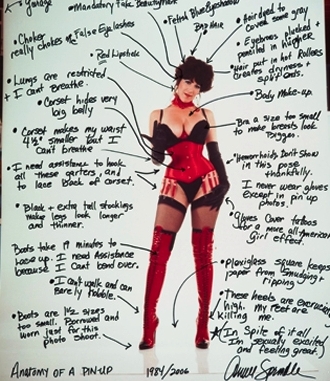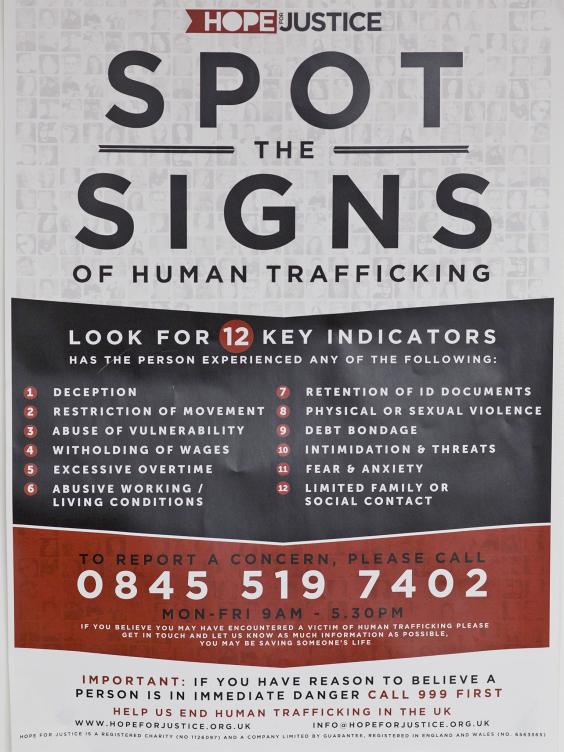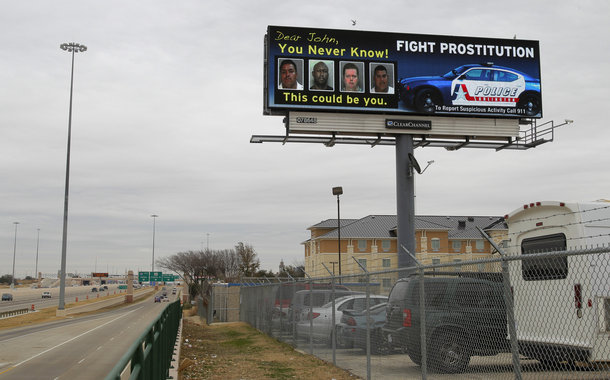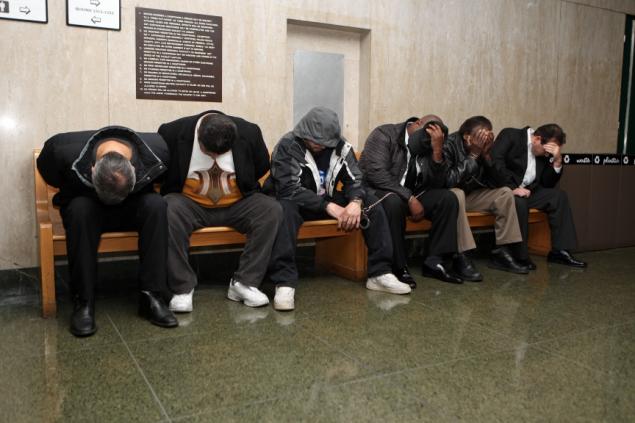 I am looking forward to being in Hamburg, Germany, in August, for this unusually interesting event. My own talk is called Disqualified: Why sex workers suffer social death and will focus on how representation of women who sell sex as damaged victims disqualifies them from rights and justifies a whole Rescue Industry devoted to pushing them around. Some of this was covered in Prostitution Law and the Death of Whores.
I am looking forward to being in Hamburg, Germany, in August, for this unusually interesting event. My own talk is called Disqualified: Why sex workers suffer social death and will focus on how representation of women who sell sex as damaged victims disqualifies them from rights and justifies a whole Rescue Industry devoted to pushing them around. Some of this was covered in Prostitution Law and the Death of Whores.
The whole event will take place in English, so if you are near Hamburg, consider a visit. Venue: Kampnagel, Jarrestraße 20, D-22303 Hamburg. Write to tickets [at] kampnagel.de to reserve a place. Or you may show up at the box office and hope tickets are available on the day(s).
INTERNATIONALES SOMMERFESTIVAL: KONFERENZ: FANTASIES THAT MATTER. IMAGES OF SEXWORK IN MEDIA AND ART
Alice Schwarzers Aufruf zum Verbot von Prostitution hat in den deutschen Medien eine rege Diskussion entfacht. Jenseits der moralischen und politischen Frage, wie mit Sexarbeit umzugehen sei, ist dabei auch deutlich geworden, dass die Debatte von Projektionen, Fantasien und Mythen dominiert wird. Verlässliche Informationen zur Sexarbeit gibt es auch deshalb nicht, weil dieses Berufsfeld immer noch stark stigmatisiert ist und Sexarbeiterinnen und Sexarbeiter selbst kaum an der öffentlichen Repräsentation ihres Berufs teilhaben. Gemeinsam mit dem Missy Magazine veranstaltet das Internationale Sommerfestival eine Konferenz auf der Bildwissenschaftlerinnen, Sexarbeiterinnen, Künstlerinnen und Medienmacherinnen in Vorträgen, Diskussionen und Performances die Bilder von Sexarbeit untersuchen, die – nicht nur die aktuelle – Diskussion dominieren. Was erzählt das Bild, das sich die Gesellschaft von Sexarbeit macht, über ihr Verhältnis zu Frauenarbeit, Sexualität und Sexualmoral, Gender, Migration und Armut?
DAS PROGRAMM:
[Fr] 08.08.
18:00 ERÖFFNUNG und BOSOM BALLET (Annie Sprinkle) /// p1
Nach einer kurzen Eröffnung der beiden Konferenz-Gastgeber Margarita Tsomou (Kulturwissenschaftlerin/Missy Magazine) und Eike Wittrock (Theaterwissenschaftler/Internationales Sommerfestival) zeigt Annie Sprinkle zur festlichen Eröffnung der Konferenz das BOSOM BALLET (Brüste-Ballett) – eine ihrer legendären Performances.
18:15 IMAGE_WHORE_IMAGE. THE POLITICS OF LOOKING AND LOOKING BACK Vortrag von Antke Engel (D) /// p1
Antke Engel, Leiterin des Instituts für Queer Theory (Hamburg/Berlin), eröffnet die Konferenz mit einem Vortrag zu künstlerischen Bildern von Sexarbeit und betrachtet die Politik der Repräsentation im Spannungsfeld von Fremd- und Selbstbild. Engel ist freie Wissenschaftlerin im Bereich feministischer und queerer Theorie und hat seit den 1990ern maßgeblich das Feld queerer Geschlechter- und Sexualitätenforschung im deutschsprachigen Kontext wie auch auf internationaler Ebene geprägt.
19:30 BAISE MOI Gespräch mit Filmausschnitten mit Coralie Trinh Thi, Drehbuchautorin, und Stefanie Lohaus, Missy Magazine Herausgeberin /// p1
BAISE MOI (Fick Mich!) schockte 2000 das Kinopublikum mit einer schonungslosen Darstellung von Sexualität und Gewalt, formuliert aus weiblicher Perspektive und vor dem Hintergrund »realer« Erfahrungen mit Sexarbeit. Coralie Trinh Thi, Drehbuchautorin des Films, wird gemeinsam mit Missy Magazin-Herausgeberin Stefanie Lohaus Ausschnitte aus dieser kontroversen filmischen Darstellung von Sexarbeiterinnen kommentieren und diskutieren.
22:00 MACHO DANCER Performance von Eisa Jocson (PHL/B) /// p1
Für ihr Solo MACHO DANCER hat sich die bildende Künstlerin und Choreografin Eisa Jocson eine Form des erotischen Tanzens, die vornehmlich in philippinischen Schwulenbars praktiziert wird, angeeignet. Zu Powerballaden und Soft Rock bewegen sich junge Männer in einer hyperstilisierten Form von Männlichkeit, lassen langsam ihre Hüften kreisen und präsentieren ihre Muskeln. In der Übertragung auf ihren (weiblichen) Körper verschwimmen dabei Geschlechterbilder, und die Mechanik dieser ökonomischen Körper-Performance wird sichtbar.
[Sa] 09.08.
11:00 PROSTITUTION PRISM REFLECTIONS: FROM FACT TO FANTASY Vortrag von Gail Pheterson (F) /// p1
Gail Pheterson hat mit ihrem Buch »Huren-Stigma«, das im Original bereits 1986 erschien und das als internationales Standardwerk gilt, einen wesentlichen Beitrag zur feministischen Debatte um Sexarbeiterinnen geleistet. Die Autoren des Klassikers zum Stigma ist seitdem für ihre Publikationen zu Prostitution international bekannt – sie ist Dozentin und Forscherin am Centre de recherches sociologiques et politiques, Paris CRESPPA-UMR 7217, CNRS und der Université Paris 8 und wird über die Thesen ihres letzten Buches Le prisme de la prostitution (Paris, L’Harmattan, 2001) vortragen.
12:00 BREAD AND ROSES: RETHINKING SEXUAL AND ECONOMIC JUSTICE Vortrag von Nikita Dhawan und María do Mar Castro Varela (D), anschließend Gespräch mit Luzenir Caixeta (AUT) /// p1
Nikita Dhawan ist Juniorprofessorin für Politikwissenschaft mit Schwerpunkt Gender/Postkoloniale Studien an der Goethe Universität Hamburg, im Rahmen des Exzellenzclusters »Die Herausbildung normativer Ordnungen«. Maria do Mar Castro Varela ist Professorin an der Alice Salomon Hochschule für Angewandte Wissenschaften, Berlin. Sie beide gehören zu den innovativsten Denkerinnen der intersektionellen Verschränkung von Migration und Feminismus im deutschsprachigen Raum. Zusammen werden sie über die Frage der Repräsentation migrantischer Sexarbeit referieren. Anschließend findet ein Gespräch mit Dr. Luzenir Caixeta, Mitbegründerin und Koordinatorin des Forschungsbereichs von maiz (Autonomes Zentrum von und für Migrantinnen, Österreich) statt, das für seine Arbeit mit migrantischen Sexarbeiterinnen über Österreich hinaus relevant ist.
14:30 DISQUALIFIED: WHY SEX WORKERS SUFFER SOCIAL DEATH Vortrag von Laura María Agustín, anschließend Gespräch mit Camille Barbagallo (GB) /// p1
Laura María Agustín ist Soziologin, arbeitet zu undokumentierter Migration, Menschenhandel und der Sexindustrie und hat mit ihrem einflußreichen Buch »Sex at the Margins: Migration, Labour Markets and the Rescue Industry« (Zed Books 2007) neue Thesen zur Rolle von NGOs und Hilfsorganisationen in der Sexarbeit in die internationale Debatte gebracht. Nach ihrem Vortrag wird sie mit Camille Barbagallo, Forscherin an der Goldsmiths Universität London, diskutieren warum die Stimme bzw. die Versuche von Selbstrepräsentation seitens der Sexarbeiter_innen in der Öffentlichkeit entweder nicht gehört oder disqualifiziert werden.
16:00 ZOOM IN: PROSTITUTION/POLITICS HAMBURG Gespräch mit Ulrike Lembke (HH), Undine de Rivière (HH) und Gerhard Schlagheck (HH) /// p1
Das Panel wird sich mit der konkreten Situation in Hamburg – der »Stadt der Huren« – beschäftigen sowie die Debatte um das deutsche Prostitutionsgesetz aufnehmen. Ulrike Lembke ist Juniorprofessorin für Öffentliches Recht und Legal Gender Studies an der Rechtswissenschaft der Universität Hamburg – sie soll unter anderem auch der Frage nachgehen wie geltendes Recht gesellschaftliche Verhältnisse widerspiegelt, d.h. warum etwas als rechtmäßig gilt oder nicht. Undine de Rivière ist Sexarbeiterin in Hamburg, Sprecherin des Berufsverbandes für erotische und sexuelle Dienstleistungen und wegweisendes Mitglied des »Ratschlags Prostitution Hamburg«. Gerhard Schlagheck leitet das »Basis-Projekt«, die einzige Anlaufstelle für männliche Stricher in Hamburg. Sie beide sollen konkret über ihre Auseinandersetzungen mit der rechtlichen Situation in Hamburg sprechen.
18:00 WATCH ME WORK Performance von Liad Hussein Kantorowicz /// k4
Liad Hussein Kantoworicz ist Performerin (UDK Masterstudiengang SODA), Sexarbeiterin, Autorin, Queer-Aktivistin und Gründerin der ersten Gewerkschaft für Sexarbeiterinnen im Mittleren Osten. Darüber hinaus arbeitet sie für eine israelische Erotik-Chat-Webseite, bei der die Kunden für intime Gespräche und persönliche Live-Performances pro Minute zahlen.
In der Performance WATCH ME WORK ermöglicht sie einen Echtzeit-Einblick in diese Cyber-Sexarbeit und lässt sich aus verschiedenen Perspektiven bei ihrer gleichsam intimen wie höchst theatralen Performance beobachten.
20:30 MY LIFE AS A METAMORPHOSEXUAL SEX WORKER. ALWAYS RECREATING MY SEX WORKER SELF Performance von Annie Sprinkle (USA), mit Beth Stephens und Gästen /// p1
Die legendäre Pornodarstellerin, Künstlerin und Sexarbeitsaktivistin der ersten Stunde, Annie Sprinkle, kehrt für eine ihrer Lecture Performances nach Hamburg zurück. Sprinkle ist eine der bekanntesten Vertreterinnen des sexpositivem Feminismus und eine Ikone der sexuellen Aufklärung in den USA und darüber hinaus. Sie hat Sexualität praktisch und theoretisch erforscht, vom Heiligen bis zum Profanen. Ihre Arbeit an der gemeinsamen Emanzipation von Frauen und Sexarbeiterinnen ist international wie historisch von großer Relevanz. Ihre Performance »Post Porn Modernist« tourte durch mehr als 19 Länder und wurde zu einer wichtigen Intervention im Sex-War innerhalb der feministischen Bewegung der 80er Jahre in den USA:
Auf dem Sommerfestival wird sie anhand von Videos, Fotografien, Mini-Performances und einem Ritual der heiligen Eco-Hure aus ihrem ereignisreichen Leben und von ihren politischen Aktivitäten berichten, die sich derzeit auf Liebe, Beziehung, Brustkrebs, Altern und den Schnittpunkt von Ökologie und Sexualität – Sexecology – konzentrieren.
[So] 10.08.
12:00 COLLATERAL DAMAGE Mithu Sanyal im Gespräch mit Carol Leigh AKA Scarlot Harlot
Carol Leigh AKA Scarlot Harlot ist nicht nur, weil sie den Begriff Sexarbeit erfunden hat, eine der international wichtigsten Figuren der Sexarbeiter_innen Bewegung. Sie gilt als einer der »Muttern« der Sexarbeiter_innen-Bewegung, sie ist Autorin, Sexeducator, Produzentin, Filmemacherin, hat mehrere Veröffentlichungen, mehrere Festivals gegründet und leitet nun das San Francisco Sex Worker Film and Video Festival.
Während der Konferenz werden durchgehend Auszüge als Preview ihres neues Dokumentarfilms COLLATERAL DAMAGE: SEX WORKERS AND THE ANTI-TRAFFICKING CAMPAIGNS als Installation gezeigt.
Über die Arbeit an dem Film spricht sie mit Mithu Sanyal, der preisgekrönten Journalistin und Autorin des mehrfach übersetzten Buchs über die Kulturgeschichte des weiblichen Genitals »Vulva – Die Enthüllung des unsichtbaren Geschlechts« (Wagenbach Verlag, 2013).
12:30 SELFREPRESENTATION: SEX WORK AND ART WORK Abschlussdiskussion mit Liad Hussein Kantorowicz, Coralie Trinh Thi, Eisa Jocson, Annie Sprinkle und Carol Leigh AKA Scarlot Harlot /// p1
Das Abschlusspanel der Konferenz bringt die Medienmacherinnen und Künstlerinnen der Konferenz zusammen, um über die eigenen Strategien von Selbstrepräsentation im Spannungsfeld zwischen Selbst-und Fremdbild zu reflektieren.
PERFORMANCES IM RAHMEN DER KONFERENZ:
Eisa Jocson: MACHO DANCER (08.08. / 22:00)
Liad Hussein Kantorowicz: WATCH ME WORK (09.08. / 18:00)
Annie Sprinkle: MY LIFE AS A METAMORPHOSEXUAL SEX WORKER. ALWAYS RECREATING MY SEX WORKER SELF (09.08. / 20:30)
Seite teilen
KONZEPTION Margarita Tsomou, Eike Wittrock.
Die Konferenz ist eine Zusammenarbeit mit der Körber-Stiftung und dem Missy Magazine.
Information: mail [at] kampnagel.de
–Laura Agustín, the Naked Anthropologist
 What isn’t on this list of signs of human trafficking? Has there ever been a vaguer term than abuse of vulnerability? It could describe being a parent or teacher easily. If informants are supposed to make a telephone call based on any of these signs – which is what this says – then heaven help the switchboards. No wonder Rescue-Industry groups have to ask for so much funding.
What isn’t on this list of signs of human trafficking? Has there ever been a vaguer term than abuse of vulnerability? It could describe being a parent or teacher easily. If informants are supposed to make a telephone call based on any of these signs – which is what this says – then heaven help the switchboards. No wonder Rescue-Industry groups have to ask for so much funding. The Convention on Transnational Organised Crime was published in Palermo in 2000 by the UN Office on Drugs and Crime. Two protocols on human mobility were appended, one on trafficking, the other on smuggling. The process of defining these was long and conflictual and has been documented publicly. It was all supposed to pertain to undocumented migrants, a topic nearly always omitted from current commentary. I’ve written about these protocols more than once, particularly their genderedness and how sex is pointed to when the mobile people are women but not when they are men. The cover to my book Sex at the Margins used the image of mobility and human agency seen here.
The Convention on Transnational Organised Crime was published in Palermo in 2000 by the UN Office on Drugs and Crime. Two protocols on human mobility were appended, one on trafficking, the other on smuggling. The process of defining these was long and conflictual and has been documented publicly. It was all supposed to pertain to undocumented migrants, a topic nearly always omitted from current commentary. I’ve written about these protocols more than once, particularly their genderedness and how sex is pointed to when the mobile people are women but not when they are men. The cover to my book Sex at the Margins used the image of mobility and human agency seen here.




























